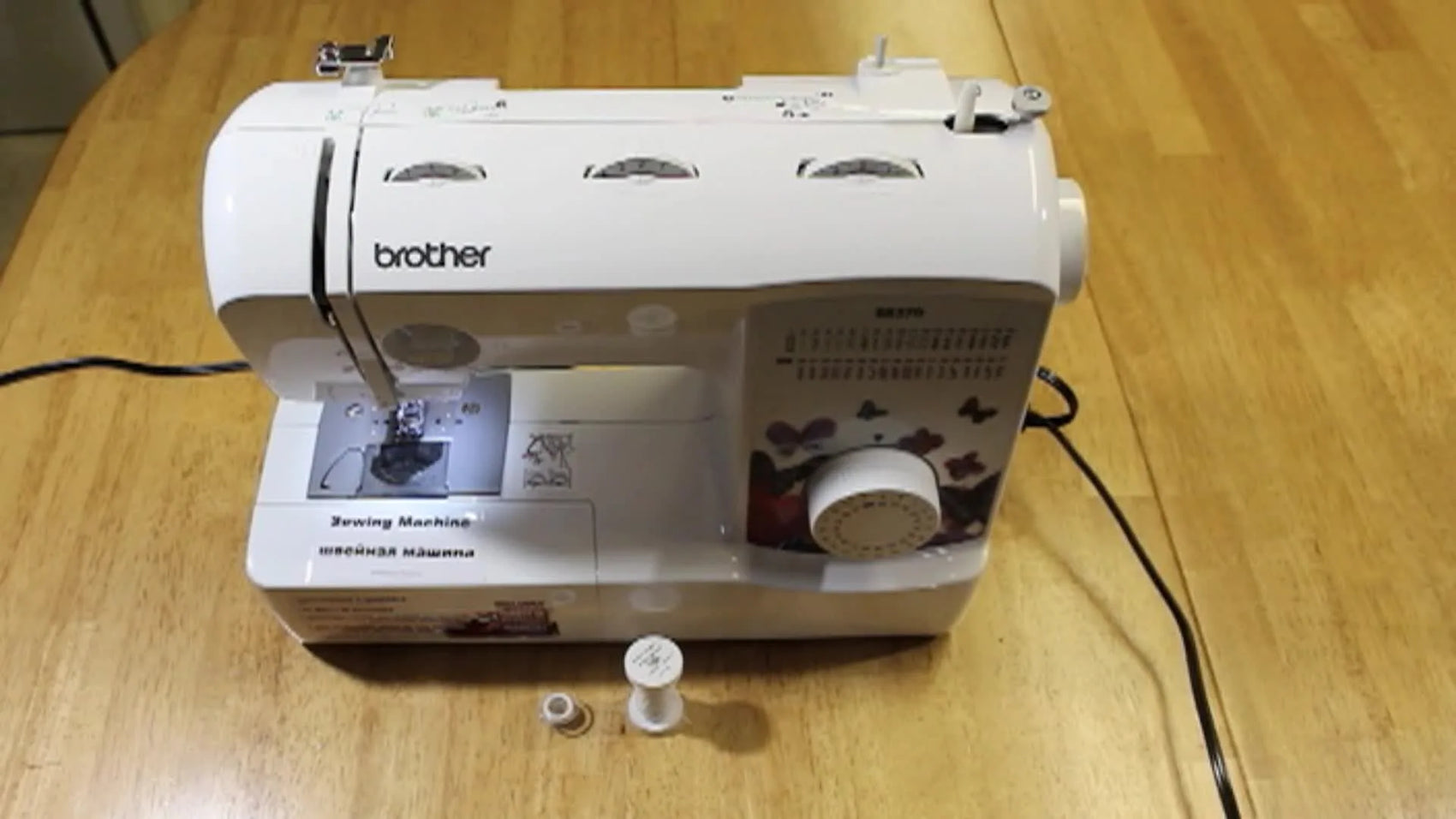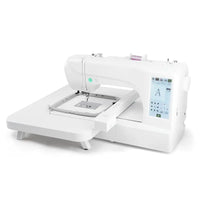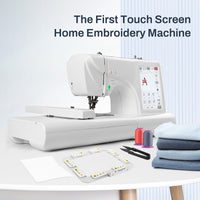Table of Contents
Introduction to Threading Your Brother Sewing Machine
If your machine’s light is on, your needle can move—accidentally. The video begins with a firm safety reminder: before threading, turn the machine off or unplug it. It’s the simplest way to prevent a finger-meets-needle mishap while you’re learning. brother sewing machine
Pro tip
- Keep a small waste cup by your machine to corral thread tails and trimmings so your workspace stays tidy.
Watch out
- If you rest your foot on the pedal while threading, even lightly, the machine can cycle the needle. Power off avoids that risk entirely.
Understanding Your Sewing Machine's Components
A bobbin supplies the lower thread from under the needle plate; your upper spool feeds thread from above. The video shows a clear plastic bobbin wound with white thread and emphasizes a crucial point: make sure your bobbin type is correct for your Brother model. Using the wrong size can cause jams and tension problems.
On top, you’ll use a standard spool of thread. The video notes you can get creative using different colors in the top and bobbin if your project calls for it. The machine doesn’t require them to match—choose what makes your design sing. brother accessories
Safety first: The presenter reminds us again—leave the machine off while handling the thread path, the needle, and the bobbin area.
Key guides to know: the pop-up thread holder, the first clip/guide near the top, the vertical slit that routes down the front, the lower guide, and the metal take-up lever (referred to in the video as a little metal clip/claw). Those points, plus the slit near the presser foot, define the correct top-thread path.
Quick check
- If you pull gently on the threaded path and the spool spins freely—without snags or tightness—you’ve likely seated the thread correctly through the tension path and take-up lever.
Step-by-Step Guide to Threading the Top Spool
Mounting the Thread Spool
Start by raising the thread holder on top of the machine. Place your spool so the thread feeds in the correct direction (toward the front in the video). This prevents early tangles and helps tension behave.
Give yourself slack—don’t be shy about pulling off a bit of thread so you can steer it exactly where it needs to go without tugging. brother sewing and embroidery machine
From the comments
- Several viewers mentioned that close-up visibility can be tough with light thread on a light machine body. Use a task light or place colored paper behind the thread temporarily while you route it so you can see the path more easily.
Navigating the Thread Path
Guide the thread under the first upper clip/guide. Keep a steady but gentle tension with your free hand so the strand sits neatly in the guide rather than jumping out.
Now route the thread down the main front slit, under the lower guide, and back up to the metal take-up lever (the “clip/claw” in the video). Ensure the take-up lever is in its raised position; if it isn’t visible, wiggle the handwheel until it comes up, then drop the thread into it so it seats correctly. A quick tug test should make the spool spin without grabbing. brother embroidery machine
Watch out
- Skipping any of these guides—especially the take-up lever—can cause nesting or inconsistent tension as soon as you start stitching.
Threading the Needle
With the top path set, thread the needle. The video suggests making sure the end isn’t frayed first—clip it cleanly if needed. Then pass the thread through the needle’s eye. A little patience here pays off.
Secure the newly threaded strand under the small slit/clip beneath the presser foot so it’s controlled and not looping around. Pull the thread to the back and leave a few inches tail (the video specifically calls for “a good couple of inches”). That extra length matters for the next steps. brother hoop
Quick check
- After securing the thread beneath the presser foot’s clip/slit, give the thread a gentle tug. It should be taut but smooth—not snagging around the foot.
Mastering the Bobbin Thread Installation
Inserting the Bobbin Correctly
Drop in the bobbin so the loose end unwinds in the direction shown in your machine’s diagram. In the video, the orientation matters; if it’s reversed, the tension will be wrong.
Pull a bit of bobbin thread and feed it into the front slit in the bobbin area (the presenter references an instructional diagram nearby). Seat the thread so it “latches” and pulls smoothly. If it feels tight or jagged, remove and reseat the strand in the slit until the pull feels smooth. brother embroidery hoops
From the comments
- Several viewers asked, “Which slit?” In the video it’s the small slot at the front of the bobbin housing. If your specific model looks different, consult your machine’s diagram on the bobbin cover itself—it often shows the exact path.
Engaging Bobbin Thread with the Needle
With the top thread tail held lightly, turn the handwheel to lower and raise the needle once (manually). This action should catch the bobbin thread and bring up a loop.
If you don’t see a loop, repeat slowly and make sure the top thread has a bit of slack. Some commenters noted they had to turn the wheel in the opposite direction on their machine to catch the loop; the video does not specify direction, so go slowly and watch for that small arc of bobbin thread to appear. brother magnetic frame
Use a small tool—closed scissors or tweezers—to gently hook the loop and draw the bobbin thread up. The video demonstrates using the tip of scissors to reach under the foot without cutting. Once both threads are up, pull them to the back under the presser foot. This is your “ready position.”
From the comments
- Multiple viewers struggled to see this step in various tutorials. If you can’t spot the loop on your own machine, add extra light and try two slow handwheel cycles. If you still can’t see it, look for a tiny tail peeking out of the bobbin area and carefully pull it up as one commenter suggested.
Final Checks for a Smooth Sewing Experience
Gently pull on both threads at the same time. They should move smoothly with no gritty tension. You may see the bobbin rotate slightly as you pull; that’s a good sign the threads are correctly seated. If anything feels tight or “grabby,” retrace your routes:
- Confirm the top thread is in every guide and, crucially, the take-up lever
- Re-check the bobbin direction and that the thread is actually in the front slit
- Verify you left a couple of inches of tail behind the presser foot on both threads
Quick check
- Before sewing, lower the presser foot and do a manual handwheel turn to make sure the machine cycles without snags—and that both threads stay tidy behind the foot. brother magnetic hoop
Troubleshooting common threading issues
- No bobbin loop appears: As shown in the video, cycle the needle slowly by hand and give the top thread a little slack. If a loop still doesn’t surface, hook any small strand you see in the bobbin opening with tweezers or scissors and pull gently.
- Thread nesting on the underside: One viewer noted fixing nesting after correcting how the top thread wrapped near the silver guide/take-up area. Re-check that top path.
- “I can’t find the slit” for the bobbin: It’s at the front edge of the bobbin housing in the video; consult your bobbin cover diagram for your exact model.
- Handwheel direction: If forward isn’t catching, try reversing direction and watch for the loop as one commenter reported. Go slowly.
- Needle hitting the presser foot: This specific issue wasn’t addressed in the video. If it happens on your model, stop, power off, and consult your manual for needle position/alignment guidance or seek service if unsure.
Watch out
- Do not run the machine while your fingers are near the needle or bobbin area. Keep the power off during all threading steps.
Ready to Sew!
You’ve got two clean thread tails behind the presser foot and smooth tension when pulled. That’s your green light to sew a test seam on scrap fabric. Keep the machine well-lit while you get comfortable with the motion and feel.
Pro tip
- Color-contrast is your friend: if your machine and thread are both light, switch to a darker thread for the setup practice so you can see the path clearly.
From the comments: what beginners found most helpful
- The safety callout to turn the machine off before threading
- Seeing the top-thread route into the take-up lever and how a gentle pull test confirms it’s seated
- The bobbin orientation and feeding into the front slit
- The manual handwheel cycle to bring up the bobbin loop
Where to go next
- Practice a few straight seams to get comfortable with feeding fabric and maintaining even speed.
- Explore decorative possibilities later—if you own a combined model, you can branch into embroidery once threading feels second nature. brother sewing and embroidery machine
Maintenance tips for peace of mind
- Keep a small brush handy to clear lint around the bobbin area.
- Replace needles regularly—dull needles cause skipped stitches.
- Store a couple of correct-type bobbins with your machine so you’re never tempted to use the wrong style.
Expanding your setup
- As you grow, you might add compatible extras like different presser feet or fabric guides. Many readers also explore embroidery-capable models from the same brand family when they’re ready to expand their skills. brother embroidery machine
From the comments: visibility matters
- Several viewers wished for tighter zoom during tiny steps. Take this as a cue for your home setup—extra lighting, a magnifier, or colored background can make a big difference when learning.
Sewing confidence checklist
- Machine powered off when threading
- Spool direction correct; top path includes the take-up lever
- Needle threaded with a clean-cut tip
- Top thread secured under the presser-foot clip/slit; tails behind the foot
- Bobbin seated with correct unwind direction; thread latched in the front slit
- Loop retrieved via handwheel and tool-assisted hook if needed
- Both threads pull smoothly without tension snags
When embroidery curiosity strikes
- If you eventually step into embroidery, there’s a whole world of frames and hoops out there for this brand family. For now, master the basics of smooth threading—your future embellishments will thank you. brother embroidery hoops
One last reminder
- Threading is a muscle memory skill. The first time feels fiddly; the third time feels familiar; by the fifth you’re on autopilot. Keep the video handy, follow the steps above, and you’ll be stitching confidently in minutes. brother accessories



